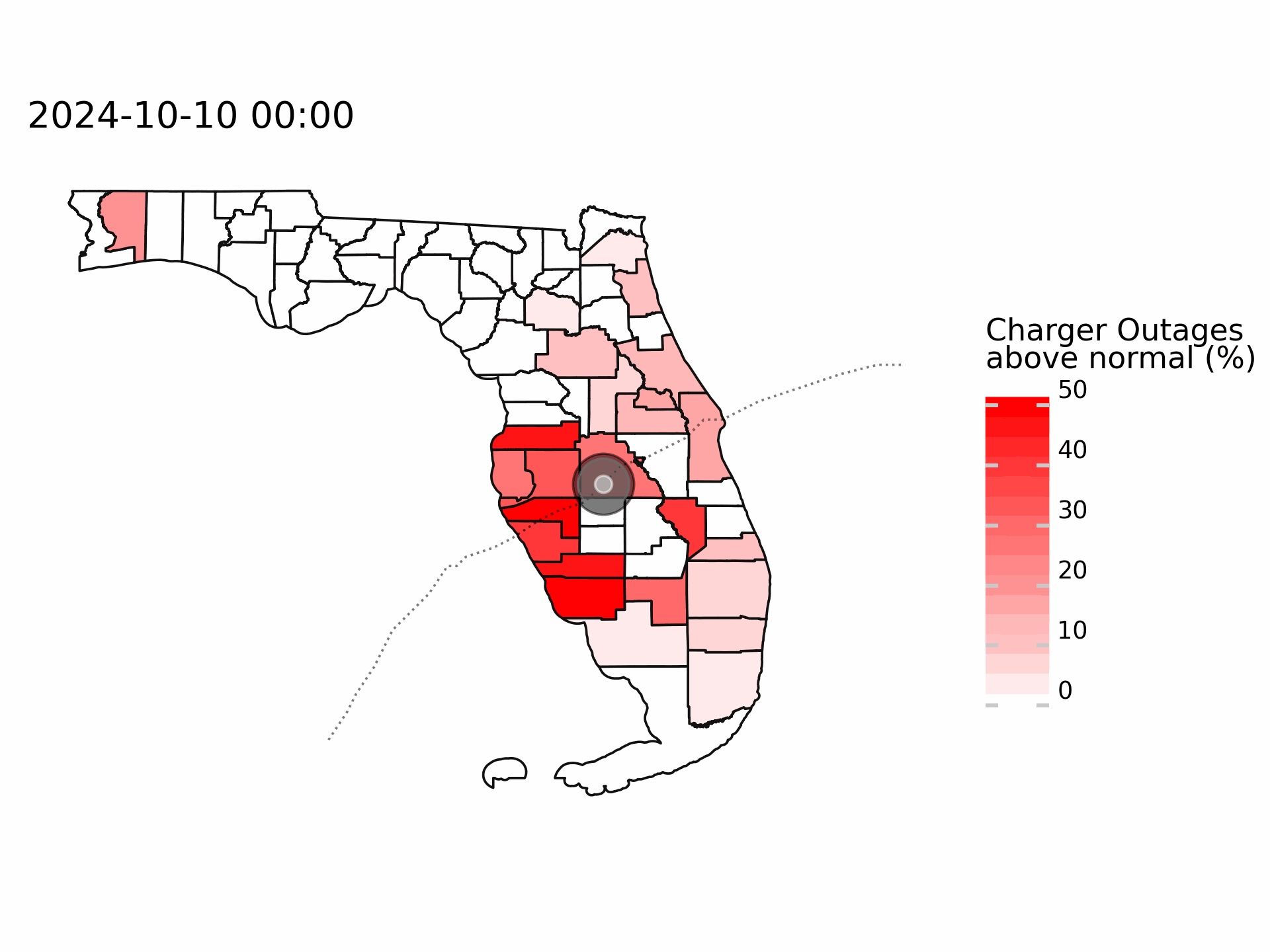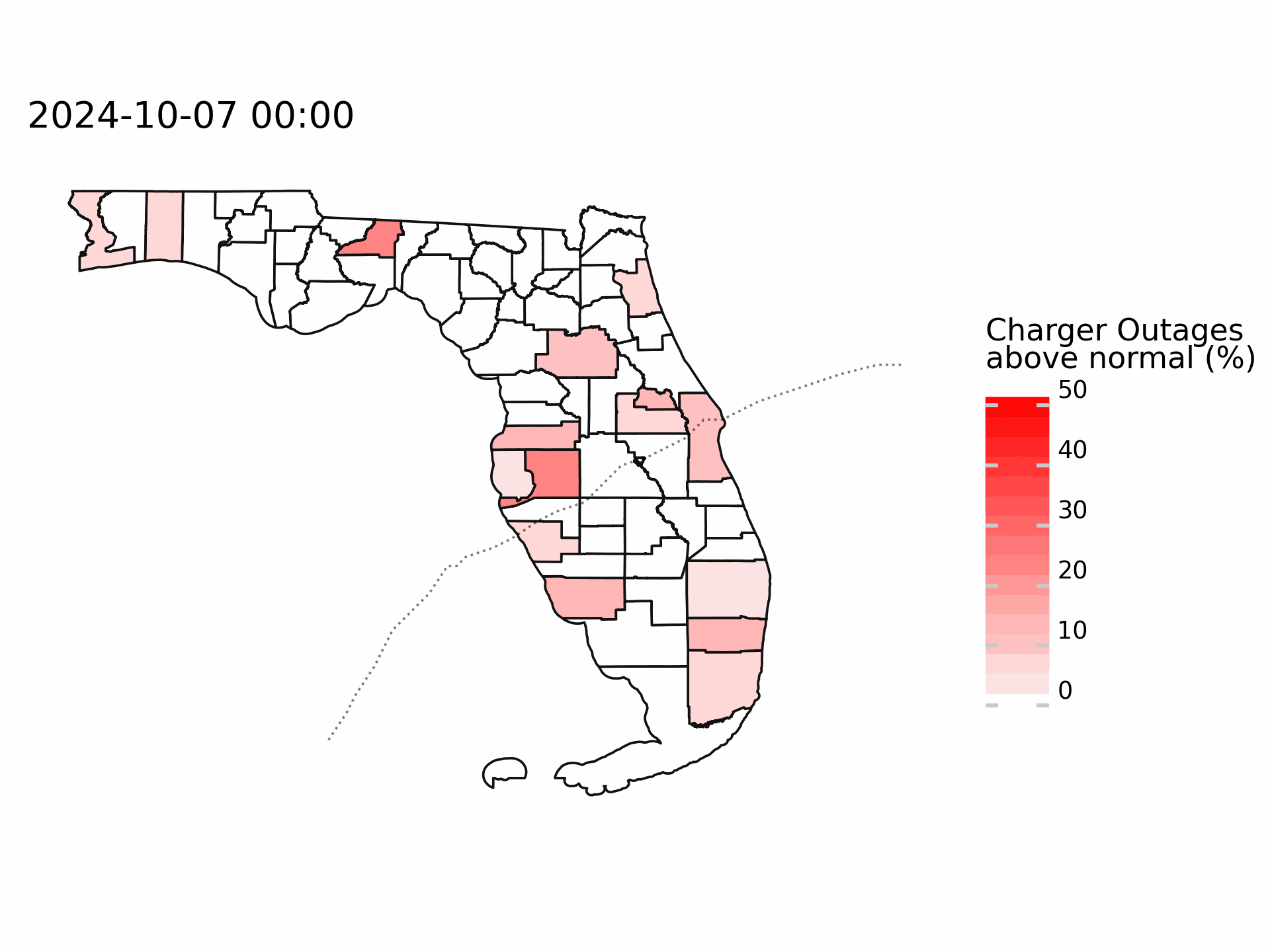
In the aftermath of Hurricane Milton, over 2000 gas stations were reported with limited supplies of fuel and long lines were reported at stations across the evacuation route. We didn’t come across similar reports for charging stations, but at Stable we firmly believe that data beats anecdotes so we wanted to see what we would find when we pulled the numbers. As it turns out, charging infrastructure held up pretty well in spite of widespread power outages.
While there were station outages, they were fairly concentrated around landfall when shelter in place orders were already in effect. Milton made landfall on October 9th and by the October 11th over 85% of chargers in Florida were back online. By October 12th, just 8% of chargers outside of Hillsborough county remained offline. Even within Hillsborough, which saw the worst impacts from the storm, just 29% remained offline by October 12th and 90% were back online by October 15th, less than a week after landfall.
Charger outages across Florida before and after Hurricane Milton

Perhaps more importantly, even with charger outages there was very limited station crowding.
DC fast charging utilization increased in the days before the hurricane, reaching 43% above average on Oct. 7. It plummeted to under 40% of normal on Oct. 9 and 10 as Floridians sheltered in place, but rebounded again immediately after the hurricane, reaching 92% of normal usage on Oct. 11 despite lingering power outages.
Some of the counties along evacuation routes, especially Alachua and Duval counties in the northeast saw periods of higher utilization but no counties saw any period with >60% utilization for more than 3 hours of any day. If you did happen to get unlucky and come to a station that was full, there was usually another one not too far away that had chargers available.
Utilization relative to baseline within 100 miles of the hurricane’s path

Average charger utilization by hour before and after Hurricane Milton

Sometimes anecdotes are not the same as reality, but in this case charging infrastructure was resilient with fewer waits and a quicker return to normality as power was restored across the state.
Schedule a demo
Schedule a 30-min time-slot with us directly, or send us a message if there's something else we can help with.